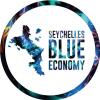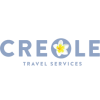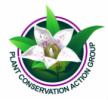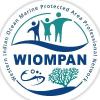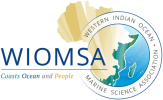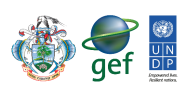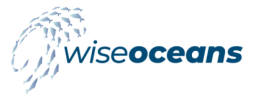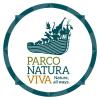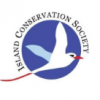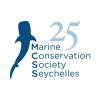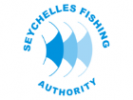Projects Being Implemented by SPGA:
Restoring Marine Ecosystem Services by Rehabilitating Coral Reefs to Meet a Changing Climate Future
Donor UNDP/Adaptation Fund
Duration 2020 – 2026
Total Budget USD 10,000,000
Objective
Reduce the impact of climate change on local communities and coral reef-dependent economic sectors in Mauritius and Seychelles, by implementing coral reef restoration with thermal tolerant corals as adaptation to climate change.
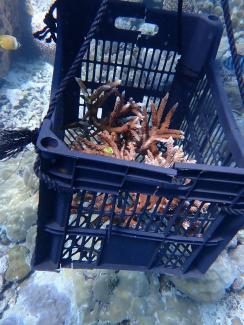
Summary
Climate change has intensified coral bleaching events and mortality in Mauritius and Seychelles over recent decades. Climate change projections predict that global coral bleaching events will increase in frequency and intensity. Therefore, to reduce the adverse impacts of climate change on local communities and coral reef-dependent economic sectors in Mauritius and Seychelles, the proposed project will increase climate resilience at both regional and local levels by implementing coral reef restoration with thermal tolerant corals as adaptation to climate change.
The proposed project objective will be achieved through the following outcomes:
Mauritius
i) development of a sustainable partnership and community based approach to reef restoration
ii) establishment of coral farming and nursery facilities
iii) active restoration of degraded reefs
Seychelles
iv) development of a sustainable partnership and business approach to reef restoration
v) establishment of coral farming and nursery facilities
vi) active restoration of degraded reefs; in both countries
vii) improved understanding and knowledge management of using coral reef restoration as an adaptation to climate change
viii) sharing regionally and globally the experienced learned in sustainable coral reef restoration
ix) training to build capacity for long-term sustainable coral reef restoration.
A Ridge to Reef Approach for the Integrated Management of Marine, Coastal and Terrestrial Ecosystems in the Seychelles
Donor GoS-GEF-UNDP
Duration 2019 – 2025
Total Budget USD 3,973,914
Objective
Undertake a comprehensive Ridge to Reef (R2R) approach that addresses the ‘whole island’ priorities of improved management and conservation of upland forest and agricultural ecosystems as well as coastal and marine ecosystems in the Seychelles, to produce global benefits in terms of conservation of globally significant biodiversity and the effective management of large marine ecosystems (including coastal and near-shore marine ecosystems), and to arrest and reverse ecosystem degradation.
Summary
The Project is designed to:
i) reduce threats to globally significant biodiversity by strengthening the country’s system of marine protected areas and reducing negative land-based impacts on those ecosystems, as well as strengthening the management of forested key biodiversity areas and their surroundings
ii) reverse land degradation in areas outside of formally protected areas and in productive land through the promotion of SLM/SFM practices and agroforestry, leading to the restoration and sustainable flows of forest ecosystem services with positive impacts to communities as well as to adjacent coastal and marine ecosystems
iii) strengthen capacity and partnerships to promote integrated ecosystem management based on the R2R approach.
By addressing a range of terrestrial threats to the marine environment, including flows of pollutants, nutrients and sediment, disrupted hydrological services, degradation of critical habitat, etc. that have significant negative impacts on important coastal/marine ecosystems including wetlands, mangroves, seagrass beds and coral reefs, the project will simultaneously improve the management of the terrestrial landscape, improve the effectiveness of integrated coastal management practices, and secure the integrity of existing and new marine protected areas in the Seychelles.
At the policy and strategic level, the project will unite the three most important spatial and resource planning processes in the country, namely the Marine Spatial Plan (for the seascape), the Seychelles Strategic Plan (for the landscape), and national and district level Land Use Plans. The project will build on these baseline activities by providing strategic incremental funding to implement priority actions in each of the plans.
Projects SPGA is Participating In:
Seagrass Mapping and Carbon Assessment
Donor PEW Charitable Trust
Duration 2020 – 2022
Total Budget --
Main Implementing Party SeyCCAT, University of Oxford
Objective
Map the distribution of seagrass beds and to collect coring samples which will be used to calculate the amount of carbon stored in our seagrass meadows.
Summary
In the coastal waters across much of our planet are meadows of seagrass that are vital to the health of our ocean. These marine flowering plants are critical habitat for a multitude of fish, invertebrates such as crabs and scallops, and other species. Juvenile fish use seagrass as nursery areas, while animals such as turtles and dugongs visit the meadows to feed. Seagrass also plays an important role in helping society adapt to and mitigate climate change. As natural carbon sinks, seagrass meadows store large amounts of atmosphere-warming carbon in their underlying soil- an estimated 10 percent of the total organic carbon stored in the ocean. In addition, seagrass meadows can help buffer coastal communities from the full impact of waves caused by storms, which scientists predict will intensify and become more frequent as seas warm.
Countries can include seagrass protections as a nature-based solution in their Nationally Determined Contributions (NDCs) to the Paris Agreement, to bolster global efforts to lessen the impacts of climate change. To account for the climate values provided by the protection of seagrass within policy — and to successfully manage the carbon stored in seagrass soils — countries should know the distribution and extent of their seagrass meadows, and (if possible) estimate the below-ground carbon stock.
A Project funded by The Pew Charitable Trusts seeks to generate this information for Seychelles, where extensive seagrass meadows provide critical habitat for marine turtles and commercially important fish and could support the country’s climate action by serving as vital carbon sinks.
Led by the University of Oxford in partnership with several local institutions and organisations, the Seychelles Seagrass Mapping and Carbon Assessment Project will build the scientific baseline necessary to support the inclusion of seagrass protections into Seychelles’ NDC. Researchers on this project will fill key data gaps regarding seagrass distribution, extent, and soil carbon stock by drawing on advances in satellite remote sensing and field collections.
Green Footprint Carbon Offsetting
Donor --
Duration 2021 - 2022
Total Budget --
Main Implementing Parties British High Commission (BHC), SPGA
Objective
Address the carbon footprint of Seychelles’ long-haul travelers and build climate resilience through the tourism industry by involving tourists in restoring terrestrial/coastal land areas with appropriate native/endemic tree species.
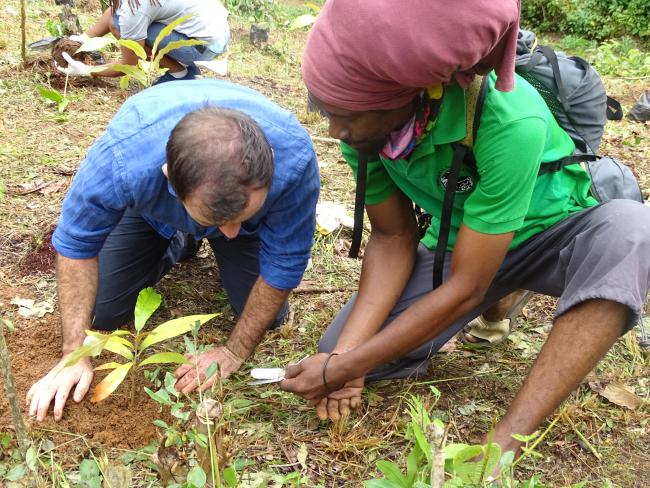
Summary
In preparation for the UK government’s leading role in responding to the climate crisis as the host of November’s (2021) COP26 climate talks in Glasgow, the BHC recognised that the crippling blow to the tourism industry from Covid-19 has accelerated longer-term projections on the decline of long-haul air travel, which may in turn bring a severe economic contraction to Seychelles over the longer term. This, coupled with the increased environmental conscience of European travelers, has already threatened to have a disproportionate impact on Seychelles, with European tourists becoming increasingly conscious of their ‘carbon footprint’.
The development and delivery of activities under this campaign will serve as just one small part of a developing movement – driven by local conservation and tourism experts – which would present an opportunity for Seychelles to use its world-leading environmental expertise and its entrepreneurial spirit, to promote itself as the green choice for European tourists.
The pilot project will include the design and delivery of a future larger-scale tree-planting project, which will aim to support local experts to test a marketable and scientifically-developed tree-planting scheme as part of Seychelles’ green recovery of tourism.
Sea Turtle Tracking Study in Ste Anne Marine National Park
Donor European Commission, the French Ministry of Overseas Territories and the Regional Council of Reunion Island
Duration 2020 - 2022
Total Budget --
Main Implementing Parties The University of Seychelles, Island Biodiversity Conservation Centre (IBC), Centre d’Étude et de Découverte des Tortues Marines (CEDTM), KELONIA-RMR.
Objective
Improve knowledge on the origin and spatial dynamics (i.e. movements at sea) of Hawksbill Turtle populations in the Western Indian Ocean.
Summary
The project aims to improve knowledge on Hawksbill Turtle populations in the Western Indian Ocean. It responds to the issues and needs identified for the species at the local and regional levels, by supporting existing programs and proposing new actions. By promoting joint research on biology (genetic identity) and ecology (migration routes), the project aims to assess the distribution and the connectivity of Hawksbill Turtle’s populations and their habitats. The expected outcomes will provide key elements to understand the regional dispersion of populations and the conservation issues of the species and its habitats, and thereby will improve management and policy decisions.
Locally Empowered Area Protection (LEAP)
Donor International Climate Initiative of the Federal Republic of Germany
Duration September 2019 - March 2023
Total Budget €680,000.000
Main Implementing Party Nature Seychelles
Objective
Increase the resilience of coastal ecosystems by taking a democratic and shared approach to governance of the Port Glaud Ramsar site, Baie Ternay and Port Launay Marine National Parks.
Summary
Involving local communities in the management of Protected Areas(PAs) is the next step towards ensuring ecosystem resilience in adapting to the effects of climate change. Nature Seychelles, along with the Government, SPGA, the local community and IUCN, aim to set up a Locally Managed Marine Area (LMMA) locally known as the "LEAP Project", where local communities will participate in the management and effective use of their natural resources. This will be the 1st locally managed site in the Seychelles.
Seychelles wants to increase participation of local communities and civil society in the management of coastal and marine resources to improve democratic decision-making and to ensure that everyone benefits. This can be achieved through co-managing with other partners in creating an LMMA. Co-management is an innovative approach supported by national plans and policies, such as the Protected Areas Policy, and is set out in the Nature Reserves and Conservancy Act.
ECO-MOORING BUOYS: Improving Sustainable Use of the Ste Anne Marine National Park Through the Installation of an Eco-Designed Mooring System
Donor SeyCCAT
Duration 2022 - 2023
Total Budget --
Implementing Party Marine Conservation Society Seychelles (MCSS)
Objective
Develop new tools and assets for the sustainable use of the Ste Anne Marine National Park through the installment of 5 novel eco-designed mooring systems.
Summary
Established in 1973 the Ste Anne Marine National Park (SAMNP) has been designated for its representation of diverse vulnerable marine ecosystems, such as seagrass beds and coral reefs. This MPA has been a center point for blue tourism, thus generating positive economic development for local communities, international investors and local authorities. However, unsustainable practices are still being carried out by users and a recent governance analysis of the SAMNP revealed that park stakeholders identified one of the main issues in the park being ‘uncontrolled anchor damage to corals due to insufficient installment of buoys’.
In order to address this issue, this project's overall goal is to develop new tools and assets for the sustainable use of the Ste Anne Marine National Park, through the installment of 5 novel eco-designed mooring systems. The proposed project aims to install eco-moorings to reconcile human activity and nature within the SAMNP. This project will be accompanied by activities surrounding the creation of an up-to-date accurate habitat map of the park. It also aims to increase the knowledge and information available to park users, to allow them to make informed environmentally conscious decisions when bringing tourists and locals into the park.
